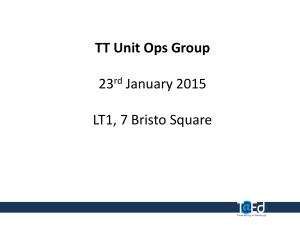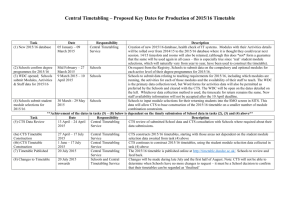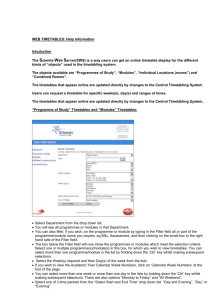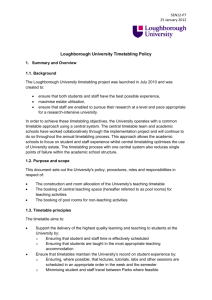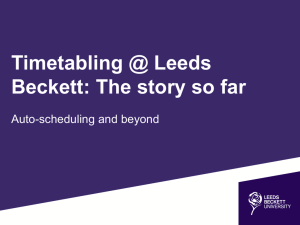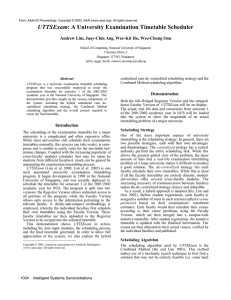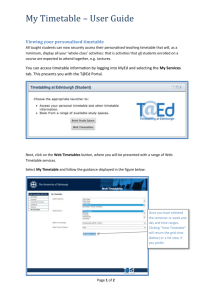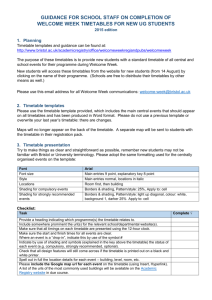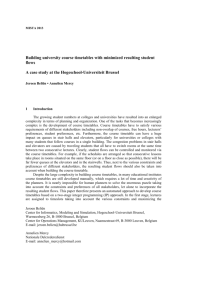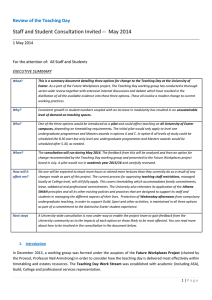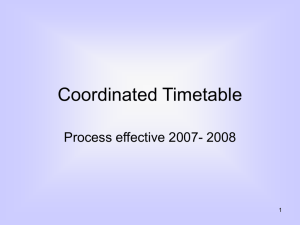arc_jisc_presentation_l_smith_and_t_vincente
advertisement
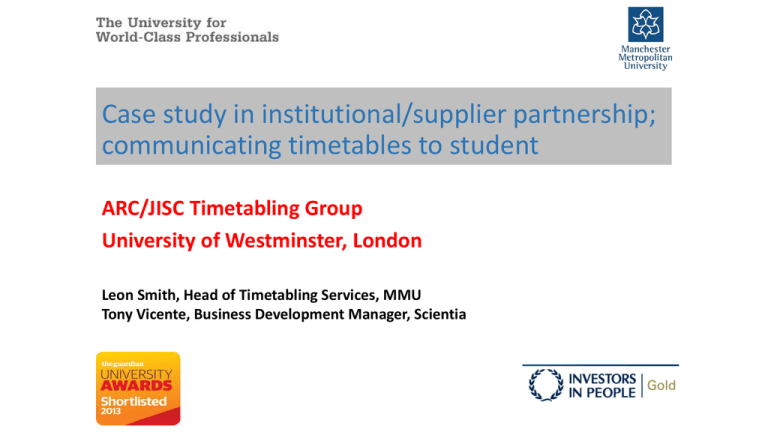
Case study in institutional/supplier partnership; communicating timetables to student ARC/JISC Timetabling Group University of Westminster, London Leon Smith, Head of Timetabling Services, MMU Tony Vicente, Business Development Manager, Scientia Overview • • • • • Who we are Context The project Benefits of collaboration Lessons learned Who we are – MMU Number of students Number of staff (all) Number of campuses Timetabling operation Active Modules 34,595 2,150 4 Centralised 5,106 Who we are – Scientia Leading provider of HE Scheduling Solutions 400 + Global user base 55% UK market share Context League table rankings A Marketing & Recruitment Processes Reputation C Student Intake (Aspirations, Attitude & Abilities) B Learning, Teaching, Assessment Student Retention & Personal Development Success & Processes, Facilities Satisfaction & Resources Resource allocation All Year Numbers A Recruit to target B Improve satisfaction, retention & success C Inform decision-makers EQAL • A coordinated strike for step-change improvement In the current climate Diminishing unit of resource New Curriculum • designing new units, … New Admin Systems & Processes • personal timetabling, … New Virtual Learning Environment • Moodle & myMMU web/mobile, Talis Aspire… New QA & QE Processes • facilitating curriculum transformation Everything depends on everything else We are large and risk averse Context – who collaborated • • • • Timetabling Services Learning and Research Technologies IT Services Scientia The Project: Objectives Key deliverables for the Timetabling project strand: • Individual student timetables supplied from the timetabling system • Earlier publication of timetable information to staff and students • Improved shape of timetable to better meet student expectations • Enhanced systems support for timetable design, delivery and related services This required: • Process redesign • New technical solutions • System upgrades and extensions A phased approach, with timetable deliverables building up year-on-year over the lifetime of the project The Project: Process • • • • • • • • Curriculum available from SRS by beginning of January Staff availability submitted by end of February Returning student options available end of March All taught delivery structures delivered by beginning of April Draft timetables issued beginning of June Individual induction timetables (applicants and returning students) published mid July Final course timetables published end of August Individual student timetable conversion complete by end of induction week This work is licensed under a AttributionNonCommercial-ShareAlike 2.0 licence The Project: The Technology Challenges • Standardising process and development cycle • Ensuring data correctly structured for accurate individual timetable information • Accommodating interim arrangements where some students received individual information and others didn’t • Combining data from different sources into a single unified individual calendar view • Keeping student statuses up to date Systems design and configuration • Develop SWS templates which enabled content to be scraped programmatically • Build lookup table to record student statuses • Ensure token passing for single sign-on was in place • Validate student against SRS (QLS) This work is licensed under a AttributionNonCommercial-ShareAlike 2.0 licence The Output Student ID Timetable Sync to personal device Access statistics September October November December MobileApp 165,427 274,472 165,952 101,331 WebPortal 314,676 342,454 136,471 67,890 TOTAL 480,103 616,926 302,423 169,221 MobileApp 34% 44% 55% 60% WebPortal 66% 56% 45% 40% 400,000 350,000 300,000 250,000 MobileApp 200,000 WebPortal 150,000 100,000 50,000 0 September October November December Areas of collaboration • • • • • Look-up for contextual individualisation Integrated attendance monitoring database Self registration web portal Bespoke change notification framework Remote technical support Benefits of collaboration • • • • Shared understanding and knowledge exchange Taking advantage of relevant expertise Shared costs for commercially desirable developments Improved continuity planning and risk management Lessons learned • Ensure there is clarity over roles • Make sure requirements and specifications are clear on all sides • Have robust forms of both formal and informal communication Any questions?
